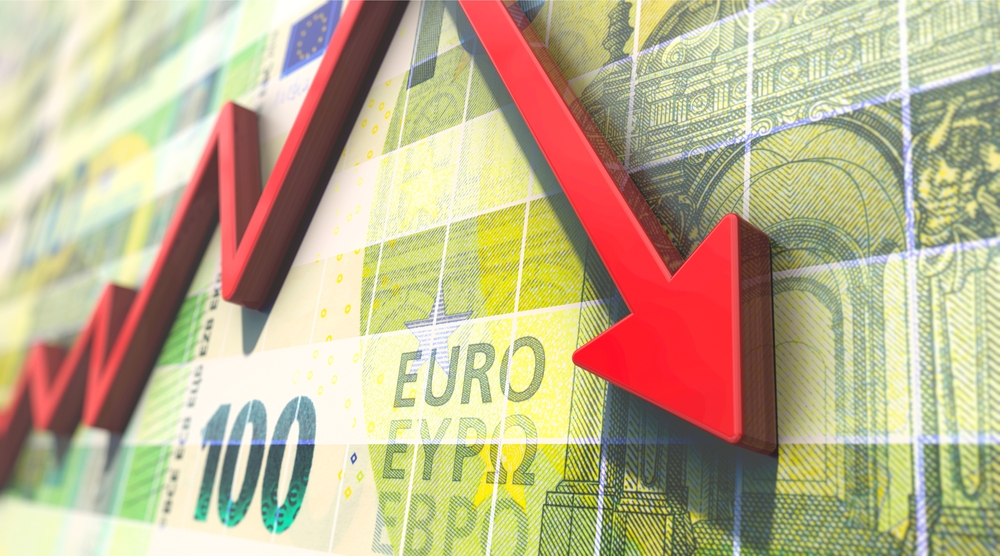
Sterling continued to break new records for 2023 against the euro yesterday, although it ended the day unchanged overall. Against the US dollar it managed to hold onto its gains and ended the day close to 1% up.
The driver of sterling versus the euro and dollar has been the differing paths that inflation is taking. In Europe the rate of price increases is falling faster, with core inflation dropping to 5.3% – below expectations – and suggesting that the European Central Bank (ECB) can now end its interest rate rises.
In the UK inflation remains stubbornly high, meaning that interest rates will likely continue to rise. That boosted bond yields in the UK compared to the eurozone too. Good news for investors, if not mortgagees, sending capital into the UK and strengthening the pound.
However, ECB chief Christine Lagarde poured cold water on the idea that inflation is defeated, saying: “We need to continue our hiking cycle until we are sufficiently confident that inflation is on track to return to our target,” which strengthened the euro in later trading yesterday.
Various interest-rate setters in the US have, however, indicated that rises can be paused, which sent the dollar into a tailspin.
In business news, the US debt ceiling crisis appears to be waning, with legislation to raise government borrowing and avoid a government default apparently about to be signed with just days to spare. However, while the US’s credit rating appears to be safe, France’s credit rating could be downgraded due to the claimed weakness in its public finances. The French government is in discussion with S&P, the ratings agency, to avoid a downgrade, and they will have been cheered by positive industrial output data this morning.
A new post-Brexit disagreement has arisen between Brussels and London. UK car exporters face paying 10% trade tariffs from January due to ‘rules of origin’ terms and the lack of battery supply from within the UK. Brussels wants the UK to join the Pan-Euro-Mediterranean (PEM) agreement to solve the problem, while the UK wants the EU to suspend the new levy until 2027 to allow time to build up its battery capacity. UK exporters in other industries, says the FT, are hoping that joining the PEM would help them too.
Yesterday the former US Treasury Secretary told the BBC that “Brexit will be remembered as a historic economic error that has reduced the competitiveness of the UK economy, put downward pressure on the pound and upward pressure on prices… All of which contributed to higher inflation.”
The UK faces another train strike today, the 29th day of action over the past year.
Make sure any upcoming transactions are protected against the risks of sudden market movements. Secure a fixed exchange rate now with a forward contract; call your Business Trader on 020 3918 7255 to get started.
GBP: Sterling strong as mortgagees set to suffer again
The pound’s roughly 1.3% surge against the euro this week takes it to more than 2.5% stronger. It is all predicated on inflation data showing that the Bank of England must continue raising interest rates to beat inflation while the ECB can ease off.
The same scenario is in play between GBP and USD, and yesterday the pound recovered around all of the losses from midweek and more, to be placed at its strongest since early May and 5% stronger than the start of 2023.
Yesterday’s manufacturing PMI was a little better than expected, while mortgage lending dropped off a cliff, declining by £1.4bn when a rise of £0.3bn had been expected by the markets. Should the markets have been surprised, given the rises in interest rates?
There is no major data today and not a great deal next week, although final readings for services and composite PMI could be interesting, and householders will be looking at the Halifax House Price Index on Wednesday. There is some evidence that housing is the first market to be hit by interest rate changes.
GBP/USD past year
EUR: Inflation falls as economic indicators slow
Despite a spectacular loss yesterday morning, the euro actually ended the day up on sterling yesterday, as well as markedly up on the US dollar – close to 1%.
Yesterday’s data including some pretty dire manufacturing PMI results, with purchasing managers in the manufacturing industries of almost all major European economies reporting declining optimism.
However, inflation has fallen in the eurozone to 6.1%, well below expectations, indicating that Europeans are doing what the European Central Bank wanted them to in its successive interest rate increases, spending less and thus forcing inflation down. Christine Lagarde said yesterday that the ECB would continue on this course.
There isn’t a great deal of data today, but Monday starts with Germany’s balance of trade and final results for services PMI across the Continent.
USD: Likely rate hike delay cools dollar
The US dollar declined across the board yesterday, by as much as 1.5% against commodity-based currencies like the Australian and Canadian dollars and 0.8% against the euro and sterling.
The prompt was comments from various members of the Fed’s monetary policy committee the FOMC that an interest rate hike would be skipped in June.
Yesterday’s data included ISM Manufacturing PMI which fell below expectations to 46.9.
This afternoon is the monthly non-farm payrolls data, generally accepted as an excellent gauge as to the health of the US economy – and a genuine market mover to watch out for. A heavy decline is expected, from 2023’s monthly average of 285,000 new jobs to below 200,000.
Next week starts with Services PMI which is expected to be positive (anything over 50 denotes overall optimism) at over 52.
For more on currencies and currency risk management strategies, please get in touch with your Smart Currency Business trader on 020 3918 7255 or your Private Client trader on 020 7898 0541

 020 7898 0500
020 7898 0500